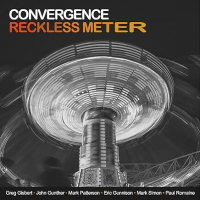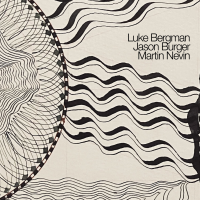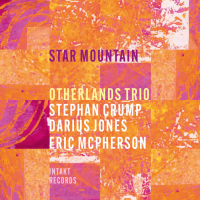Home » Jazz Articles » Album Review » John Coltrane: Chasin' The Trane Revisited
John Coltrane: Chasin' The Trane Revisited
Before examining the new album, it is worth getting its provenance straight... The first Impulse album, Live At The Village Vanguard, was released in 1962; it comprised what are the opening three tracks on the six track ezz-thetics disc. In 1998, Impulse released an extended edition, Live At The Village Vanguard: The Master Takes, which added what are tracks four and five on the ezz-thetics disc. A year earlier, Impulse had released the 4-CD set The Complete 1961 Village Vanguard Recordings, from which track six on the ezz-thetics disc is taken. (Various tracks from the Vanguard recordings were also issued on other Impulse and MCA albums in the 1970s and 1980s, but the 1962, 1997 and 1998 discs were the most thoughtfully curated collections).
So what we have on Chasin' The Trane Revisited is the five-track Live At The Village Vanguard: The Master Takes plus one track from The Complete 1961 Village Vanguard Recordings. But the ezz-thetics album is much more than a reissue. The big deal is that the label's Revisited series employs a combination of state-of-the-art mastering technology and outstanding engineers to deliver substantially improved audio. If you are using an even halfway decent hi-fi set up, you will notice the difference in clarity and presence, with Coltrane's saxophone and Elvin Jones' drums particular benificiaries. This makes Chasin' The Trane Revisited practically a down by law must-have for Coltrane aficionados.
The Vanguard engagement deserves its place in history for several reasons. For starters, it included the first documented performances of Coltrane's classic quartet with Jones, pianist McCoy Tyner and bassist Jimmy Garrison. That is the group heard on "Impressions" here. On other material the lineup is the classic quartet (sometimes with Reggie Workman rather than Garrison, or Roy Haynes rather than Jones) plus bass clarinetist Eric Dolphy, as on "India" and the two versions of "Spiritual" here. Yet more material has Coltrane further augmenting the lineup with oud player Ahmed Abdul-Malik or contrabassoonist Garvin Bushell (Bushell is present on one track here, the second version of "Spiritual," but his contribution is confined to playing a low-end drone, heard on the left channel, during the last ninety seconds of the closing theme statement).
On top of this, after Coltrane's considerable achievements on Atlantic during the late 1950s, the Vanguard performances have him continuing the paradigm-shifting experiments he began on his Impulse debut, Africa / Brass (1961), further radicalising his music on the threshold of his concluding belle epoque. For a Coltrane enthusiast, Impulse's 4-CD 1997 Vanguard set is as important as the 8-CD set The Complete Live at the Plugged Nickel 1965 (Columbia) is for a Miles Davis fan.
But perhaps above all, the Vanguard engagement was historic for including the debut of "Chasin' The Trane," a brutally visceral tenor saxophone tour-de-force that can still raise the hair on the back of your neck, and which back in the day created as much division as did Albert Ayler's Spiritual Unity (ESP Disk) in 1965. "It had a fairly good amount of intensity in it, which I hadn't quite gotten into a recording before," said Coltrane, with characteristic understatement, in a 1966 interview with the writer Frank Kofsky (included in Kofsky's Black Nationalism and the Revolution in Music, published by Pathfinder Press in 1970).
In his liner notes for the 1962 album, Coltrane is quoted saying that the first time "Chasin' The Trane" was recorded, on November 1, the night before the version included here, "The melody not only wasn't written, but it wasn't even conceived before we played it. We set the tempo and in we went." At that point there was, of course, no title. Various explanations exist as to why the words "Chasin' The Trane" were chosen. According to Rudy Van Gelder, the location engineer throughout the Vanguard engagement, it derives from the fact that he had to pursue Coltrane, microphone in hand, as Coltrane moved back and forth across the stage. Producer Bob Thiele offered an alternative reason: in a 1968 interview with Frank Kofsky (which is also included in Black Nationalism and the Revolution in Music), Thiele said it was because the performance evoked the headlong charge of an express train. A third explanation is offered by Lewis Porter in John Coltrane: His Life And Music (University of Michigan, 1998). The track was named "in part," suggests Porter, after Charlie Parker's "Chasin' The Bird."
The Vanguard gig was Bob Thiele's first Coltrane recording session, an accelerated learning curve during which Thiele, who had only just arrived at Impulse and was an avant-jazz virgin, received his baptism in the new music. Thiele had originally intended to record just the first night of the gig, but was so excited by what was going down onstage that, even though he did not understand it (as he later wrote), he realised something special was happening, and he and Van Gelder returned each night. In his autobiography, What a Wonderful World: A Lifetime of Recordings (Oxford University Press, 1995), Thiele described "Chasin' The Trane" thus: "It was a musical mega-nova. Physicists have long debated about the existence of a 'big bang.' Without any question the jazz equivalent occurred during that seismic quarter hour [at the Vanguard]." Record producers, like movie producers, are prone to hyperbole, but Thiele was exaggerating only by implying that jazz has experienced such a tumultuous event just the once.
Most contemporary critics hated "Chasin' The Trane," however, along with the entire Vanguard gig. Even the relatively open-minded Ira Gitler dismissed the track as "More like waitin' for a train, a 100-car freight train, to pass." Down Beat's John Tynan accused Coltrane and Dolphy of being "anti-jazz" and failing to swing, and called what they were doing "musical nonsense."
Coltrane confided to friends that he felt hurt by the attacks, particularly Tynan's claim the he and Dolphy did not swing. He offered to meet the critics and explain what he was trying to do with his music, but none of them took him up on the offer. Coltrane's genius was colossal, but his humility was river deep. The bassist Art Davis told Black Creation magazine in 1972: "He was very much a man of conviction. Even though a lot of people said a lot of very bad, hurting things about him. He'd say 'that's their opinion,' rather than cursing someone out or saying, 'if I see that motherfucker I'm going to beat the shit out of him.'"
As Coltrane said to Frank Kofsky in 1966, in the aforementioned interview which is included in Black Nationalism and the Revolution in Music: "The thing was for me to remain firm in what I was doing. [1961-62] was a funny period in my life, because I went through quite a few changes, you know, like home life, everything... It was a hell of a test for me, and it was coming out of it, it was just like I always said, man: when you go through these crises and you come out of them, you're definitely stronger."
Postscript #1: Frank Kofsky's tape recording of his Coltrane interview entered the public domain in spring 2021, when the not-for-profit Pacifica Foundation, who acquired the unedited tape after Kofsky passed, put in online. It runs for almost an hour and it is fascinating to listen to Coltrane's voice, speaking at such length. You can hear the recording in full (bar a dozen or so words from Kofsky at the start) on the YouTube below. Be warned (and be forgiving): in his excitement at meeting his idol, Kofsky has an unfortunate habit of interrupting.
Postscript #2: It may or may not be coincidental that the lifespan of Coltrane's classic quartet was more or less bookended by tenor saxophone mega-novas, each heralding an adjustment in Coltrane's trajectory. The first was "Chasin' The Trane" at the Vanguard. The second was "One Down, One Up" at the Half Note in 1965, which was released by Impulse on the 2-CD set Live At The Half Note in 2005. The label did a good job with the sonics on the discs, considering that they were mastered from tapes of radio broadcasts. But a decade and a half later, audio technology has moved on; how terrific it would be if the ezz-thetics team now turned their attention to Live At The Half Note.
Track Listing
Spiritual; Softly As In The Morning Sunrise; Chasin’ The Trane; India; Impressions; Spiritual (alternate take).
Personnel
John Coltrane
saxophoneEric Dolphy
woodwindsGarvin Bushell
bass, acousticMcCoy Tyner
pianoReggie Workman
bassJimmy Garrison
bass, acousticElvin Jones
drumsAdditional Instrumentation
John Coltrane: tenor saxophone (1, 3, 5, 6), soprano saxophone (1, 2, 4, 6); Eric Dolphy: bass clarinet (1, 4, 6); Garvin Bushell: contrabassoon (6); McCoy Tyner: piano (1, 2, 4-6); Reggie Workman: double bass (1, 2, 4, 6); Jimmy Garrison: double bass (3-5); Elvin Jones: drums.
Album information
Title: Chasin' The Trane Revisited | Year Released: 2021 | Record Label: Ezz-thetics
Tags
PREVIOUS / NEXT
Support All About Jazz
 All About Jazz has been a pillar of jazz since 1995, championing it as an art form and, more importantly, supporting the musicians who make it. Our enduring commitment has made "AAJ" one of the most culturally important websites of its kind, read by hundreds of thousands of fans, musicians and industry figures every month.
All About Jazz has been a pillar of jazz since 1995, championing it as an art form and, more importantly, supporting the musicians who make it. Our enduring commitment has made "AAJ" one of the most culturally important websites of its kind, read by hundreds of thousands of fans, musicians and industry figures every month.



























